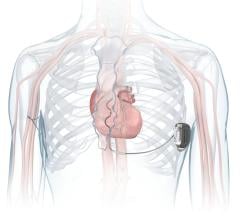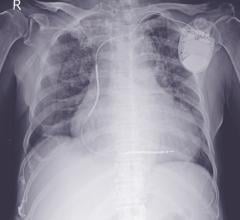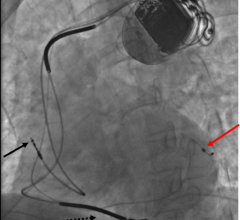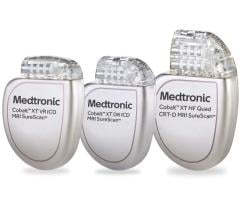May 21, 2008 - The American College of Cardiology (ACC), American Heart Association (AHA) and the Heart Rhythm Society (HRS) have jointly released updated cardiac device-based therapy guidelines, marking the first guidelines that combine indications for all cardiac implantable electronic devices.
Released during Heart Rhythm 2008, the Heart Rhythm Society’s 29th Annual Scientific Sessions, The ACC/AHA/HRS 2008 Guidelines for Device-Based Therapy of Cardiac Rhythm Abnormalities aim to improve patient care by using data from recent clinical trials and the most significant advances in pacemaker and implantable cardioverter-defibrillator (ICD) therapy.
"The updated guidelines are a product of expert analysis of recent studies that have advanced our knowledge of cardiac arrhythmias as well as major advances in device technology," said writing committee chair Andrew Epstein, M.D., professor of medicine at the University of Alabama at Birmingham. "The guidelines take a patient-centered approach and will help physicians determine the most effective treatment options available for each individual patient."
The updated guidelines offer health care providers comprehensive evidence-based recommendations for the appropriate use of cardiac devices. It is the first document to comprehensively address device-based therapy indications for life-threatening cardiac arrhythmias and conditions including heart failure, congenital heart disease and sudden cardiac arrest. Guidelines also address treatment for genetic disorders such as catecholaminergic polymorphic VT, Brugada syndrome, arrhythmogenic right ventricular cardiomyopathy and short QT syndrome.
Revised ICD indications reflect the new developments and literature related to the efficacy of these devices in the treatment and prevention of sudden cardiac death and malignant ventricular arrhythmias. Indications for cardiac resynchronization therapy (CRT) to better synchronize or coordinate the rhythm of the heart are also clarified, and the committee determined that this therapy should only be prescribed when heart failure patients are still exhibiting symptoms while being treated with the optimal recommended medical therapy.
"Indications for ICDs, CRT devices, and combined ICDs and CRT devices are continuously changing and can be expected to change further as new trials are reported," Epstein added. "These guidelines extend and clarify current best practices and will continue to evolve as technology advances."
While the guidelines primarily focus on device indications, the committee also addressed several device and patient management issues. To ensure optimal patient outcomes, the committee called for patient and family involvement in a risk assessment prior to device implantation, including discussion of life expectancy and quality of life issues.
New guidance related to ICD and pacemaker programming and management at the end of life was also included. The guidelines will be published in the Journal of the American College of Cardiology; Circulation: Journal of the American Heart Association; and the HeartRhythm Journal. Full text of the guidelines will be posted on the ACC (www.acc.org), AHA (www.americanheart.org) and Heart Rhythm Society (www.HRSonline.org) Web sites.
For more information: www.hrsonline.org

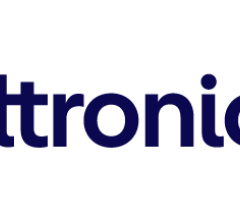
 September 05, 2024
September 05, 2024 

